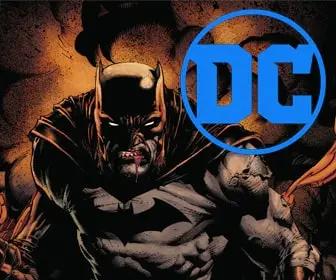
Using a Light Box for Creating Comic Book Art

A light box is a simple but powerful tool for comic book artists. It is a flat box with a light source inside, allowing light to shine through a translucent surface. Artists use it to trace and refine their sketches, making their work cleaner and more precise.
Using a light box can improve your comic book art in many ways. First, it helps you trace your initial sketches, which makes your final drawings look more professional. It also allows you to layer your work, adding depth and detail that can bring your art to life.
Beyond tracing, a light box can speed up your workflow. By providing a consistent light source, it reduces eye strain and helps you work longer without getting tired. This can be especially helpful when working on complex scenes or detailed characters.
In this article, we will explore the different aspects of using a light box for comic book art. We will discuss how to choose the right light box, set it up properly, and use it effectively. By the end, you will see how this tool can become an essential part of your art-making process.
Section 1: Understanding the Light Box
A light box is a crucial tool for comic book artists. But what exactly is it? Simply put, a light box is a flat, illuminated surface that shines light through paper, making it easier to trace and refine drawings.
Definition and Types of Light Boxes
There are several types of light boxes available. Some are basic with a single light source, while others have adjustable brightness settings. The most common types are:
- Basic Light Boxes: These have a simple design with a fixed light source. They are affordable and great for beginners.
- LED Light Boxes: These are more advanced, offering adjustable brightness and longer life. They are thin, lightweight, and portable.
- Professional Light Tables: These are larger and more robust. They often come with multiple light settings and are perfect for serious artists who need a sturdy work surface.
Key Features and Specifications to Look For
When choosing a light box, consider the following features:
- Brightness: Adjustable brightness allows you to control how much light shines through your paper, which can be helpful for different types of paper and projects.
- Size: The size of the light box should match the size of the paper you use most often. Common sizes range from A4 (8.3 x 11.7 inches) to A2 (16.5 x 23.4 inches).
- Portability: If you travel or attend art classes, a lightweight, portable light box can be very convenient.
- Power Source: Some light boxes plug into the wall, while others use batteries or USB power. Choose one that fits your working environment.
Comparison of Different Brands/Models
Here are a few popular brands and models to consider:
- Huion LED Light Pad: Known for its slim design and adjustable brightness. It’s great for beginners and professionals alike.
- Artograph LightTracer: This model is a bit more robust, offering a slanted surface for more comfortable tracing.
- Litup A2 Light Box: A larger option with high brightness levels, suitable for bigger projects and professional use.
Understanding these basics will help you choose the right light box for your needs. With the right tool, you can enhance your comic book art and make your workflow smoother and more efficient.
Setting Up Your Light Box
Setting up your light box correctly is important to get the best results. Here are some steps to help you set up your light box for comic book art.
Choosing the Right Workspace
Find a good spot to use your light box. Choose a flat, stable surface like a desk or table. Make sure you have enough space to work comfortably and keep your supplies nearby. Good lighting in your workspace is also important, even with the light box.
Positioning the Light Box
Place your light box on the chosen surface. Make sure it sits flat and doesn’t wobble. Position it at a comfortable angle for tracing. Some light boxes have adjustable angles. If yours doesn’t, you can use a book or a stand to prop it up.
Power Sources and Lighting Adjustments
Check how your light box is powered. Some light boxes plug into the wall, while others use batteries or USB power. Plug it in or insert the batteries as needed. Turn on the light box and adjust the brightness to your liking. Brightness control helps you see the details better, especially if you’re working with thicker paper.
Organizing Your Workspace
Keep your workspace tidy. Arrange your pencils, erasers, and paper within reach. Having a clean and organized workspace helps you work more efficiently and reduces distractions.
Testing the Light Box
Before starting your project, test the light box. Place a piece of paper on it and check how well the light shines through. Adjust the brightness if needed. Make sure the light is even and not too harsh on your eyes.
Setting up your light box correctly will make your comic book art process smoother and more enjoyable. With the right setup, you can focus on creating great artwork.
Using the Light Box for Comic Art
Using a light box can improve your comic art significantly. Here are some tips on how to use it effectively.
Tracing Original Sketches
Start with your rough sketches. Place the sketch on the light box and put a clean sheet of paper on top. Turn on the light box and adjust the brightness until you can see the sketch clearly through the top paper. Begin tracing the main lines of your sketch. This helps you refine your art and make cleaner lines. Keep your hand steady and take your time. The light box makes it easier to follow the lines accurately.
Transferring Rough Sketches to Clean Line Art
Once you’ve traced the main lines, add details. Use the light box to see the underlying sketch as you draw. This method lets you create clean, polished line art without losing the original details. You can also experiment with different line weights to add depth and interest to your drawings.
Layering Techniques
Light boxes are great for layering. Start with the basic structure of your drawing on one layer of paper. Place another sheet on top and use the light box to trace additional details. This technique allows you to build complex scenes step by step. You can work on backgrounds, characters, and other elements separately, then combine them into one cohesive piece.
Adding Depth and Detail
To add depth, use the light box to create multiple layers. For example, draw the background on one layer and the characters on another. This method helps you focus on each part of the drawing individually. It also allows you to make changes without affecting the whole piece. You can experiment with shadows and highlights by layering different shades of paper.
Using a light box can make your comic art more precise and professional. Practice these techniques to get the most out of your light box and enhance your artwork.
Enhancing Your Workflow
A light box can do more than just help you trace drawings. It can also make your workflow more efficient. Here are some tips to get the most out of your light box.
Time-Saving Tips and Tricks
Using a light box can save you time. When you need to repeat elements, like a character’s face or a logo, use the light box to trace the original instead of redrawing it each time. This keeps your work consistent and speeds up the process. You can also use it to quickly transfer sketches from your sketchbook to your final paper.
Maintaining a Clean and Organized Workspace
Keep your workspace tidy to work faster and better. Organize your tools and supplies so they’re easy to reach. Keep your light box and drawing area clean. This helps you focus on your art without distractions. A clutter-free space can also prevent accidents, like spilling ink or losing important sketches.
Integrating Digital Tools with Your Light Box
You can combine your light box with digital tools. For example, you can print out a digital sketch and use the light box to trace it onto drawing paper. This method lets you refine your digital work with traditional techniques. You can also scan your hand-drawn art into a computer to add digital effects or colors. This integration makes your workflow flexible and versatile.
Streamlining Your Process
Plan your steps to make your workflow smooth. Start with rough sketches, then use the light box to create clean line art. Next, add details and shading. By following a clear process, you can avoid unnecessary steps and save time. This method helps you stay organized and focused on each part of your artwork.
Enhancing your workflow with a light box not only improves your art but also makes the creative process more enjoyable. By saving time, staying organized, and integrating digital tools, you can work more efficiently and produce high-quality comic book art.
Practical Tips and Tricks
Using a light box can improve your comic book art. Here are some practical tips and tricks to help you get the most out of it.
Common Mistakes and How to Avoid Them
When using a light box, some artists make common mistakes. One mistake is using paper that is too thick. Thick paper makes it hard for light to pass through, making tracing difficult. Use thinner paper or increase the brightness of the light box. Another mistake is pressing too hard with your pencil. This can damage the light box surface. Use a light touch to keep your light box in good condition.
Creative Uses Beyond Tracing
A light box is not just for tracing. You can use it for many creative purposes. For example, you can use it to check the composition of your drawings. Place multiple sketches on the light box and see how they fit together. You can also use it to create animation frames. Draw each frame on a separate piece of paper and use the light box to ensure smooth transitions between frames.
Tips from Professional Comic Book Artists
Professional artists have their own tips for using a light box. One tip is to use the light box to trace rough sketches onto watercolor paper. This lets you create clean line art that is ready for painting. Another tip is to use colored pencils or pens to trace different elements. This helps you keep track of different parts of your drawing, like backgrounds and characters.
Maintaining Your Light Box
Keep your light box clean and well-maintained. Wipe the surface regularly to remove dust and pencil marks. Avoid using sharp tools directly on the light box to prevent scratches. Store it in a safe place when not in use to avoid damage.
These practical tips and tricks can help you use your light box more effectively. By avoiding common mistakes, exploring creative uses, and following advice from professionals, you can enhance your comic book art and make the most of your light box.
Denouement
Using a light box can take your comic book art to the next level. It helps you create clean, professional-looking drawings by making tracing and layering easier. Setting up your light box correctly and using it effectively can save you time and improve your workflow.
Remember to avoid common mistakes like using thick paper or pressing too hard with your pencil. Explore creative uses for your light box beyond just tracing, and follow tips from professional artists to get the best results. Keeping your light box clean and well-maintained will ensure it lasts a long time.
With practice and experimentation, you can find the methods that work best for you. A light box is a valuable tool that can make your comic book art more precise and enjoyable. Embrace its benefits and watch your artwork improve!










